The capacity of a restaurant simply denotes how many people/tables can fit into the dining area, right?
Well, not quite.
A restaurant’s capacity depends on its concept, ability to generate revenue, and reservation management practices as much as it does on the limits of the available space.
In this article, we’ll tell you everything you need to know about restaurant capacity so you can accurately calculate it for your own establishment and start making the most of it.
Let’s start by examining the factors that affect a restaurant’s capacity.
Table of contents
- Factors That Affect a Restaurant’s Capacity
- How to Determine Your Restaurant’s Capacity
- How to Make the Most of Your Restaurant’s Capacity
- Conclusion
Factors That Affect a Restaurant’s Capacity
Planning the capacity of your restaurant means finding a delicate balance between a stellar guest experience and optimal dining hall occupancy.
And there are a few factors that you need to take into account.
Restaurant Concept
The first factor that comes into play here is the concept of your restaurant. This should make sense right off the bat.
If you’re operating a fine-dining restaurant that offers an intimate setting and a premium menu, your guests will expect a more comfortable experience with more privacy.
After all, that’s what they’re paying a higher price for.
For instance, consider Le Pavillion in New York City.
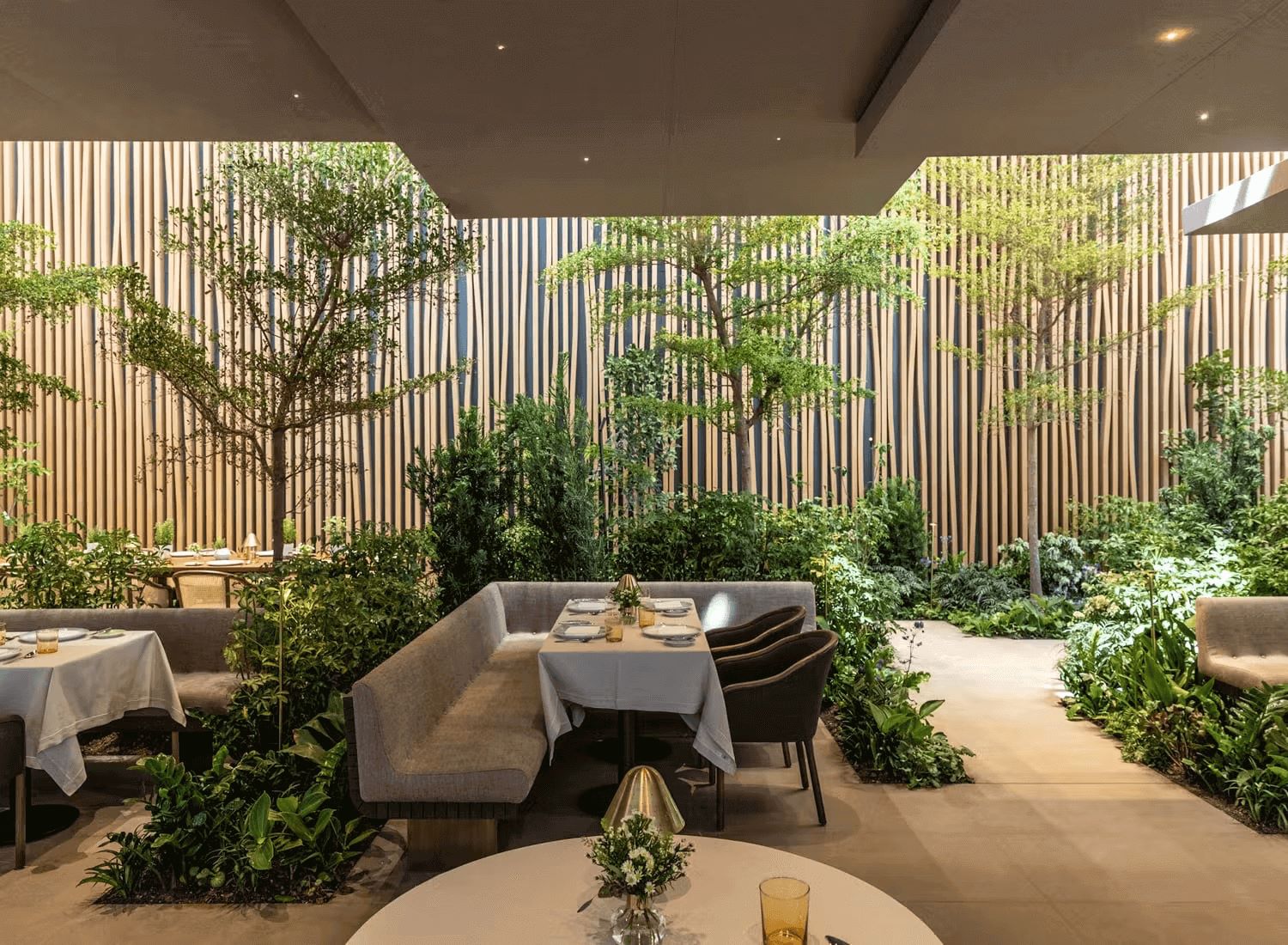
Source: Le Pavillion
This restaurant has the reputation of one of NYC’s top fine dining places and a price tag to go with it.
So, naturally, the owners don’t need to overcrowd the dining hall with tables because they can turn a profit with more limited capacity.
Trying to fit more tables in would only take away from the guests' experience and maybe even turn them away in search of a more intimate setting.
On the other hand, if your establishment is a casual eatery where guests love to come in for a quick bite and a chat with friends, you can definitely get away with a larger number of tables without putting your guests off.
In fact, many such restaurants get creative with their spaces and find clever solutions to use up every square inch of space available to them.
Here’s a fun example from Cafe Takdak Nama in Malaysia:
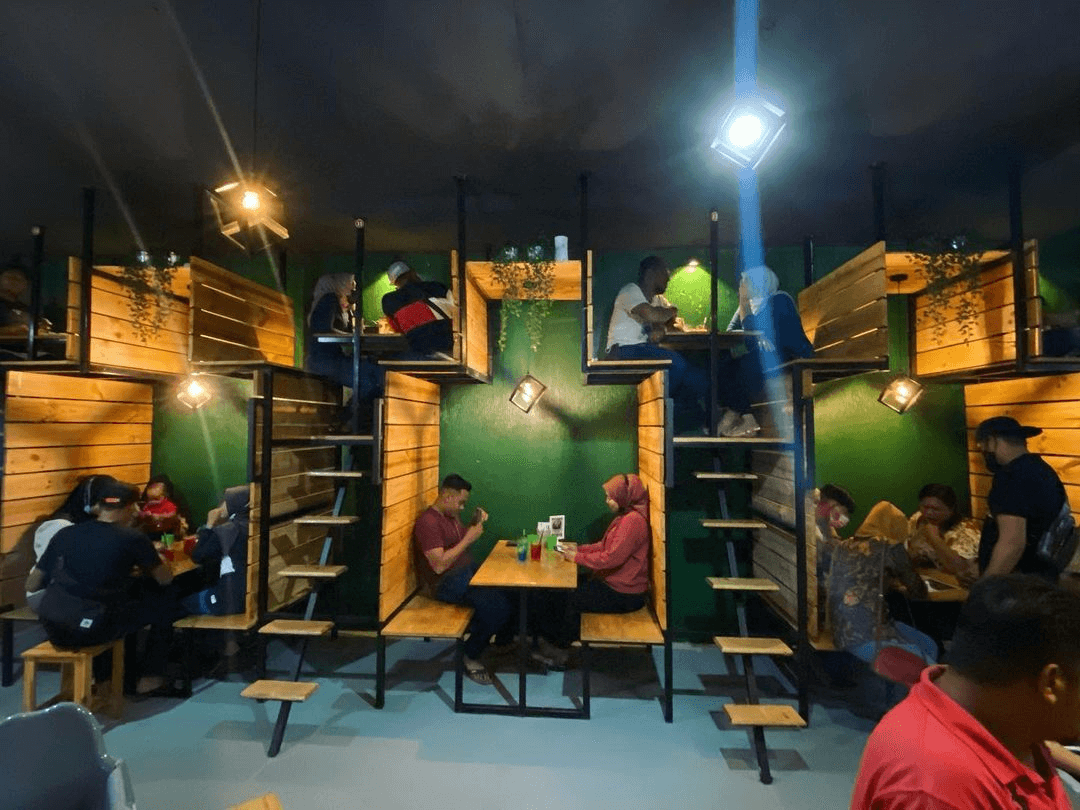
Source: Social Junkie
Casual dining restaurants come with cheaper meal options, which means that owners need more table turns to make a profit.
Patrons, on their part, don’t mind as long as they can count on an inexpensive meal and a lively atmosphere.
Space and Equipment
The other element to take into consideration when planning your restaurant’s capacity is the available space and your dining hall equipment.
For instance, you’ll need to consider the movements of your guests and staff: is the path from the entrance to every table clear and unobstructed?
Are the guests able to reach the restrooms easily and without inconveniencing other diners? Does your staff have a good route to carry orders from kitchen to table?
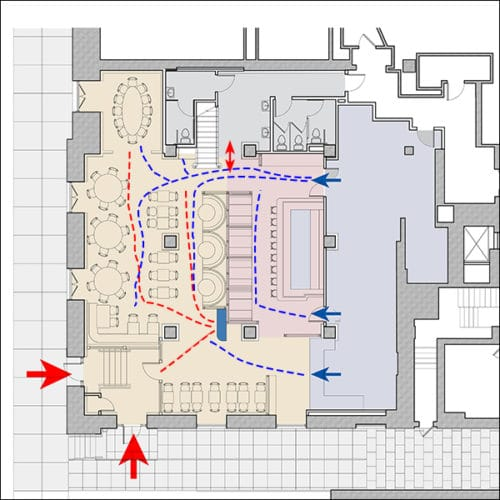
Source: Patriquin Architects
If the answer to any of these questions is no, then your dining area is probably overcrowded, and some tables need to be removed to create a more comfortable space with a natural flow.
And what about your tables? What shape and size are they?
Square or rectangular tables are a good choice if you serve larger groups because they can be easily connected and thus stretch out the capacity of your dining hall.
However, round tables are a better choice if you want to seat more people at a single table.
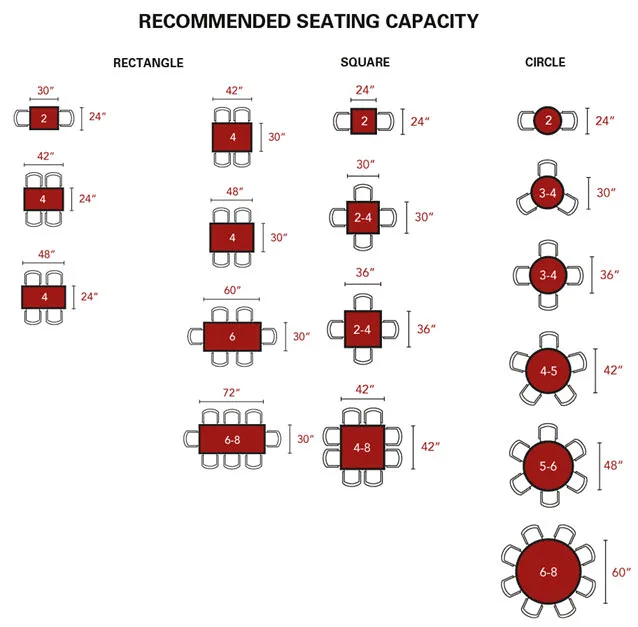
Source: Restaurant Furniture
So, as you can see, the factors that affect your restaurant’s capacity are a little more complex than just the size of the space.
You also have to consider the expectations of your guests, your ability to turn a profit, and the comfort and movements of the people in your dining hall.
How to Determine Your Restaurant’s Capacity
Now that we’ve established the factors that affect it, let’s see how we can calculate the maximum capacity of your restaurant.
Once again, your goal is to secure the maximum comfort level for your guests while also turning a profit on any average business day.
You can start by measuring the size of your dining hall.
Then, either using your floor plans or simply estimating while you’re standing in the space, try to delineate the areas that won’t be utilized for dining but rather as walking paths or spaces for decorations.
Be generous while doing this step to allow for comfortable movement for your guests and staff.
Here’s an example:
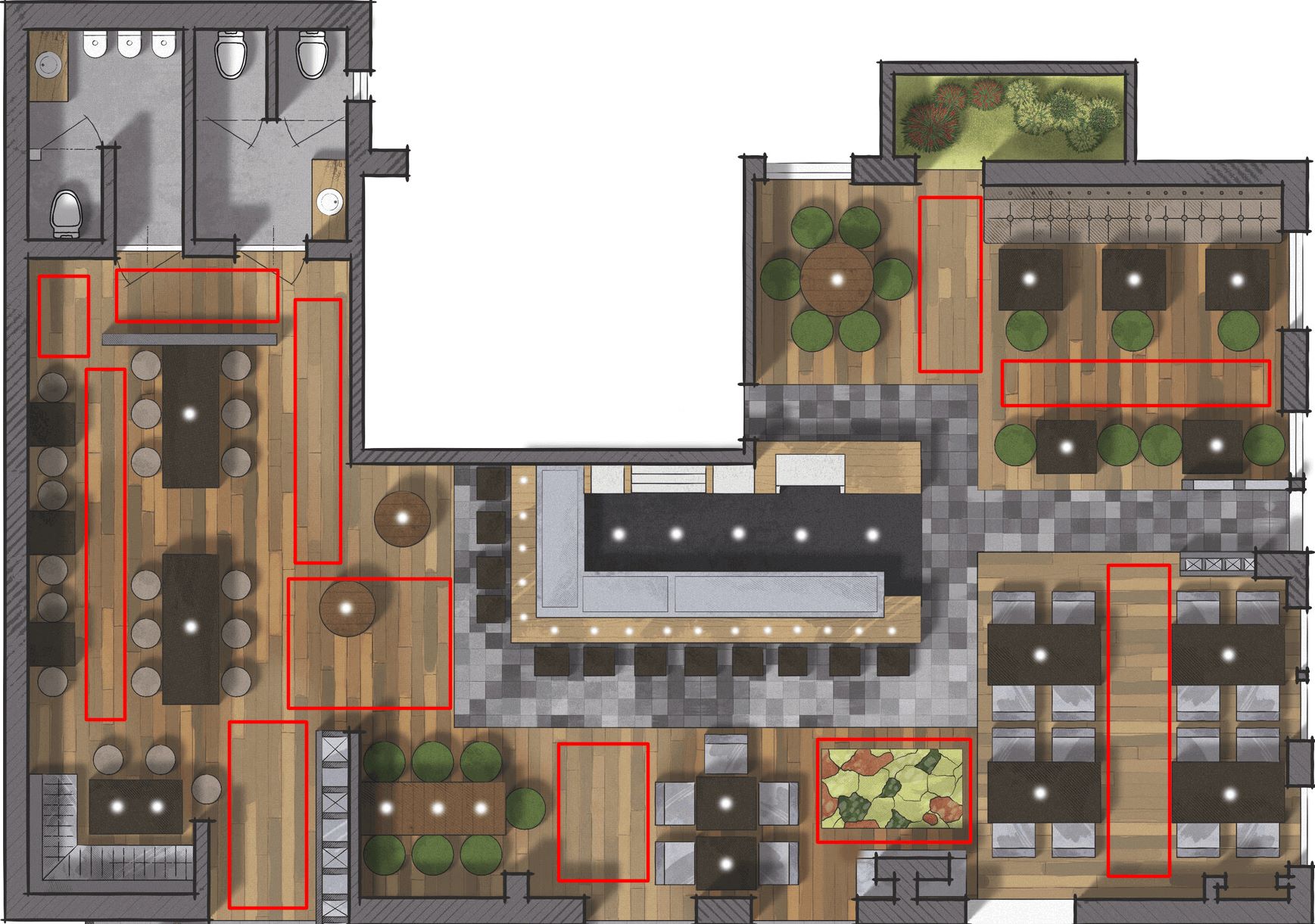
Source: Alberto Talens
If you subtract the resulting area from the total area of your dining hall, you’ll be left with the space that’s reserved for sitting down and dining.
After that, you can refer back to our recommended seating chart from the previous section to calculate the table capacity of your dining hall.
Just factor in the shapes and sizes of the tables, and you should be left with an accurate number of tables you can fit into the space comfortably.
So far, we’ve been calculating your restaurant capacity by only taking spacial limitations into consideration.
However, as we’ve already established in the last section, there’s a bit more to it than that.
So, next, let’s bring your restaurant’s concept into the equation.
In a fine-dining establishment, it might be prudent to subtract a couple of tables from the capacity we calculated in the previous step.
That way, you’ll be able to create a more intimate, exclusive setting with higher-quality seating and more elbow room for your guests, like in the example of Loukjaan in Bangkok, Thailand, which you can see below:
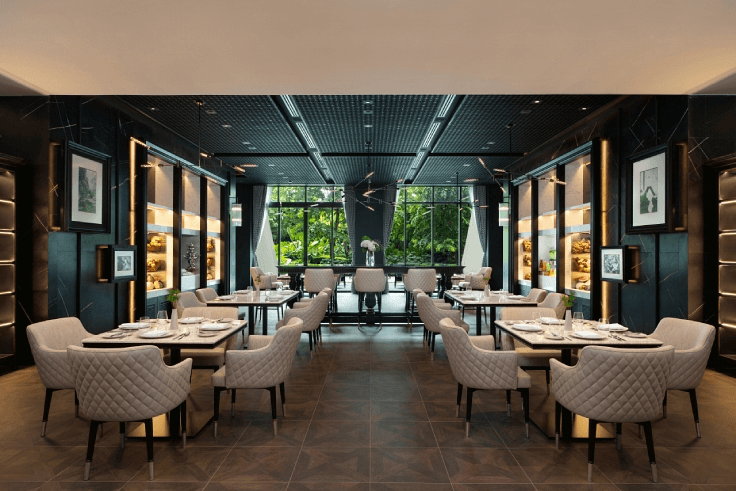
Source: Michelin Guide
As you can imagine, this can reflect positively on your revenue and even allow you to raise prices and earn more from every table.
In other words, where fine dining is concerned, less really can be more.
But where’s the limit here? Obviously, you can’t turn a profit from an empty dining hall.
Your average revenue might hold a clue.
According to the Restaurant Industry Rules of Thumb Report, a full service restaurant needs to earn $150 to $250 per square foot just to break even.
Once you open your dining hall to visitors, you can monitor your business and see how you measure up to that industry standard.
If you notice that your revenue is dipping below this average, a possible solution might be to add another table and thereby give your revenue a boost.
Let’s recap.
The capacity of your restaurant can be accurately calculated using the methods we detailed in this section. But that’s just the theoretical part.
After you’ve determined the maximum number of tables for your dining area, your next step is to see how many you can subtract to provide more comfort and still turn a healthy profit.
Of course, this might take you a couple of tries, so just keep tweaking the space until you get it right.
How to Make the Most of Your Restaurant’s Capacity
Determining the capacity of your restaurant is one thing. However, keeping it operating at that capacity is another matter entirely.
So, let’s talk about some actions you can take to make the most of your restaurant capacity and ensure your dining hall is as full as possible during business hours.
Happy Hour
First off, there’s the matter of slow versus busy times. Dinner time is probably when your restaurant is most likely to attract the largest number of guests.
But is there a way to bring in customers outside of those hours?
Yes, actually.
A good way to do that would be to offer special discounts during slow hours to entice customers to come in outside of traditional meal times.
In hospitality terms, we’re, of course, talking about happy hour.
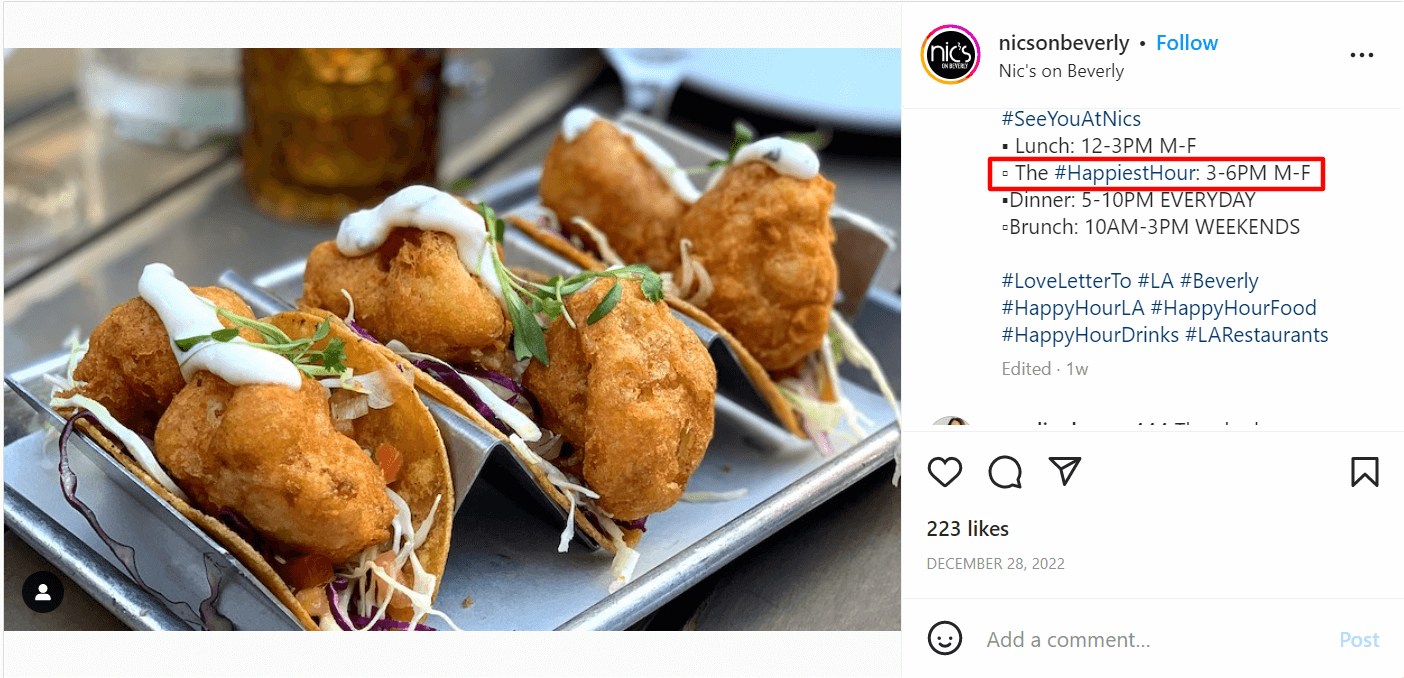
Source: Nic’s On Beverly on Instagram
Instituting a happy hour is a great way to expand the busy hours of your restaurant.
According to experienced restaurateurs, doing so can significantly boost the average weekday foot traffic.
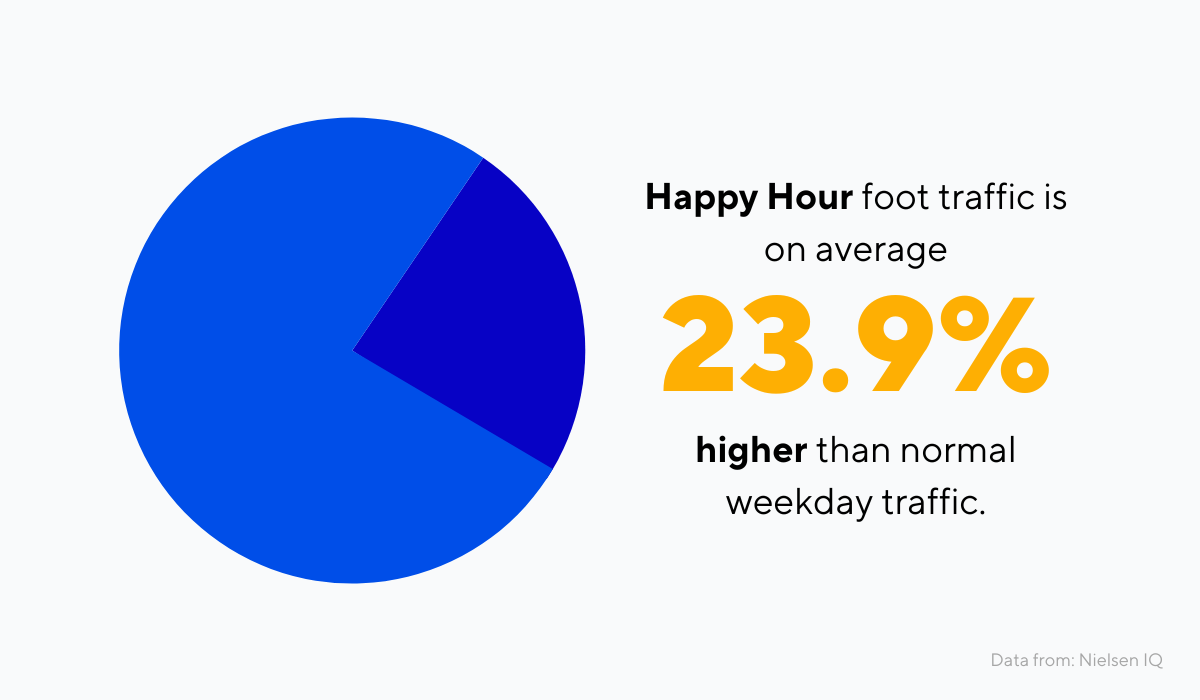
Source: Tablein
Another benefit to note here is that holding happy hours ahead of dinner should also help you take the pressure off those busy hours since a good portion of your guests might elect to come in earlier to take advantage of your discounts.
This means you can avoid turning people away at dinner, which is always a good thing.
Allow Online Bookings
Unfortunately, even at the busiest of times, restaurants can still see empty tables, especially if they don’t have a robust reservation system in place.
That’s because no-shows are still a common risk for restaurants that don’t pay enough attention to their bookings.
In fact, as many as one in five guests never actually show up for their reservation, according to recent research.
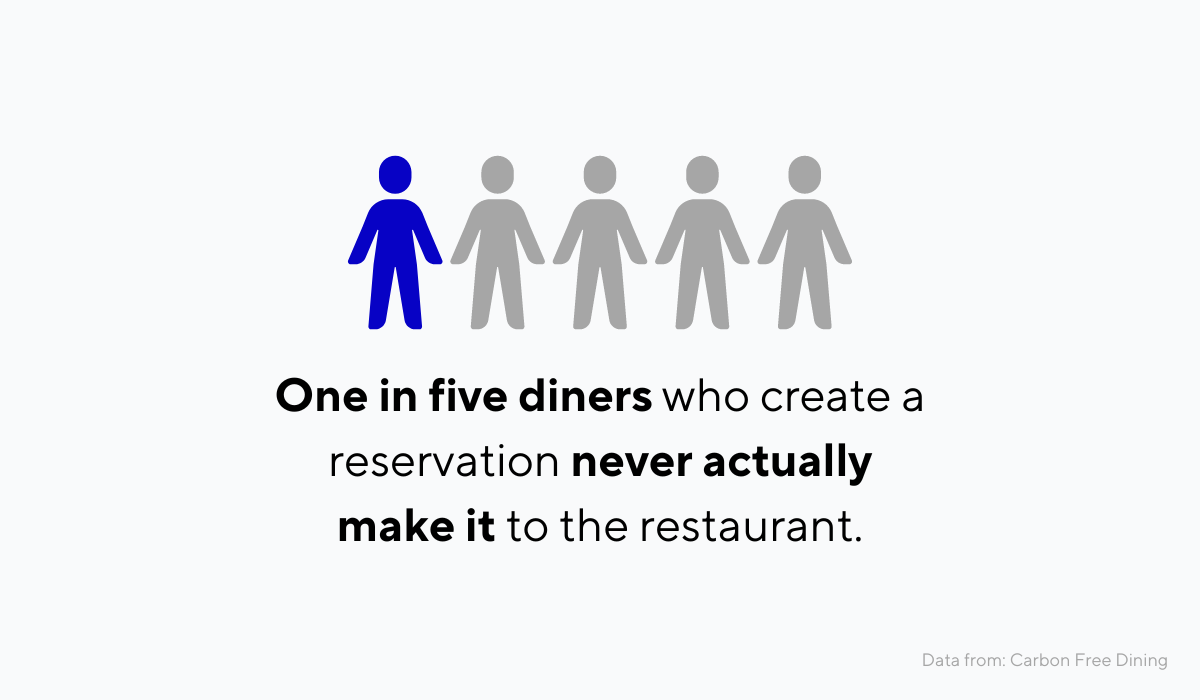
Source: Tablein
Implementing an online reservation system is an excellent solution to combat this.
This kind of system is fully automated, which means that the guests can see which times are available and pick the slot most convenient for them.
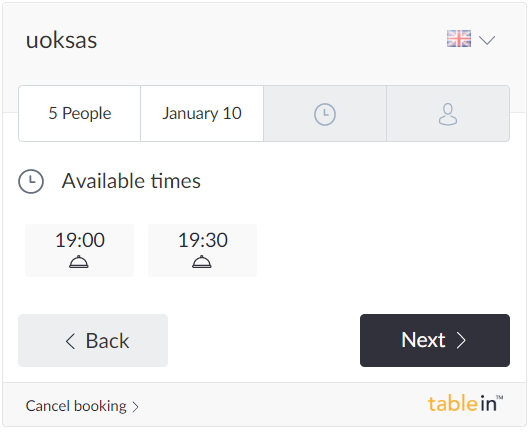
That way, your restaurant is filled with reservations automatically, and the chances of double bookings or missed reservations are significantly reduced.
Advanced reservation software will also have additional features that make it difficult for guests to forget they’ve booked a table or neglect to show up.
For example, Tablein sends automated notifications (SMS and email) to remind guests of their reservations.
It also integrates with widely used payment platforms, such as Paypal and Stripe, so you can easily take booking deposits and prepayments.

Source: Tablein
This practically guarantees that your guests will show up for their bookings, meaning you’ll be operating at full capacity and seeing an efficient flow of customers throughout dinner time.
The key takeaway here is that making the most of your restaurant’s capacity can take some work.
You’ll need to find ways to motivate guests to come in at slow times, as well as ensure that guests realize their bookings during busy times.
You can do all of that with a well-thought-out happy hour and a smart reservation system such as Tablein.
Conclusion
As we’ve proven during the course of this article, restaurant capacity can be a tricky thing to measure accurately and manage efficiently.
Apart from considering the available space, you’ll also need to find a balance between the comfort of your guests and your ability to turn a profit, as well as find ways to keep your dining hall as full as possible.
Use the advice from this article to do all of that and organize your restaurant so that your guests are always comfortable—without sacrificing your profits.
Get a 30-day Exclusive Trial
As a Tablein blog reader, you’re eligible for an exclusive 30-day free trial to experience our simple reservation solution for your restaurant.
Enter your business email, and we’ll send you all the steps needed to create your account.
Share this
You may also like

6 Tips for Implementing a Restaurant Reservation System
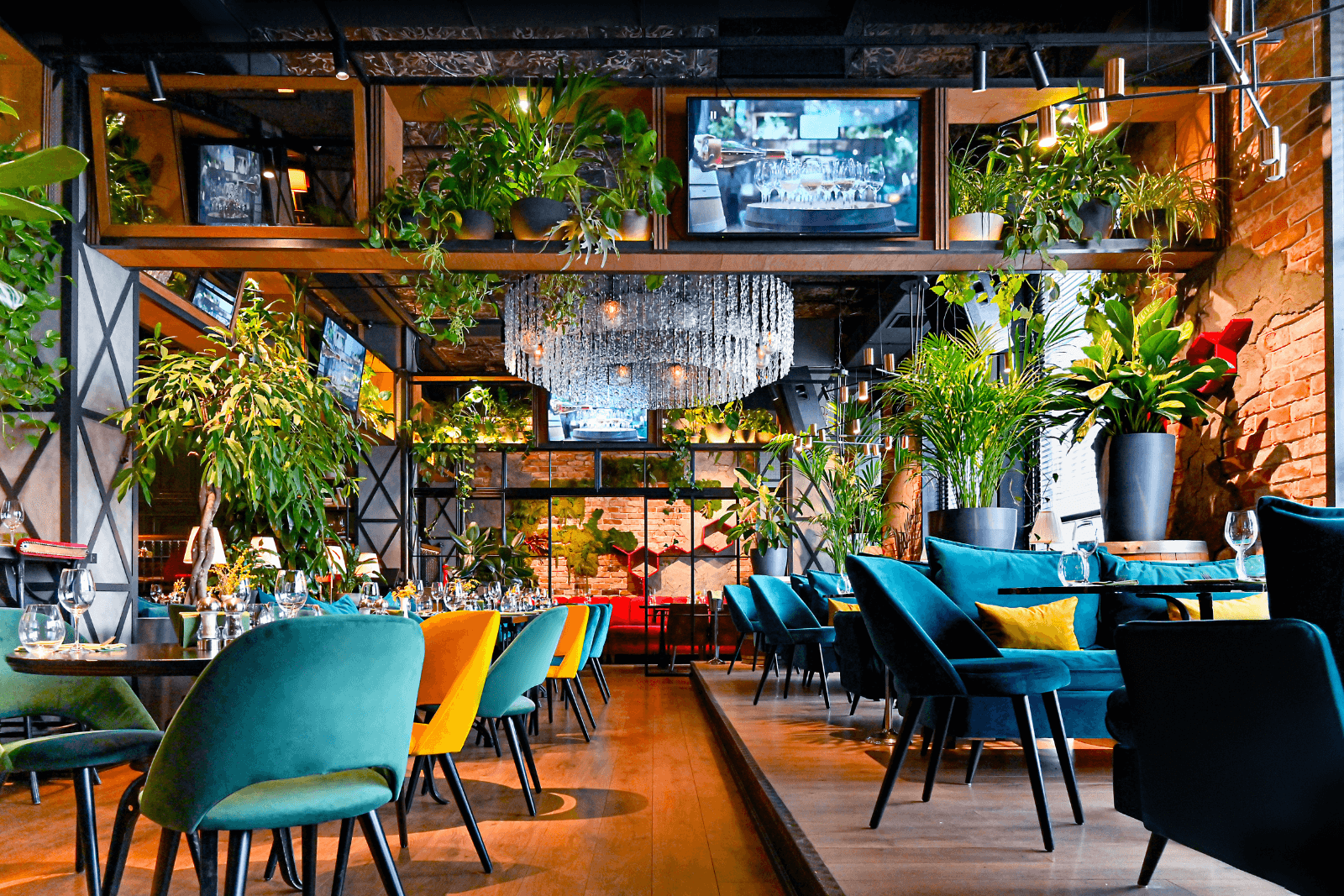
How to Improve Your Restaurant Reservation Management
